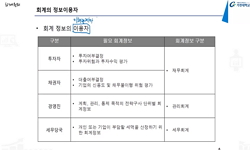본 연구는 금융시장의 정보 비대칭이 가격과 거래량 변화에 중요한 역할을 하며, 정보 비대칭의증가가 잡음(비정보) 거래자의 정보 캐스케이드(information cascades) 상황과 같은 심리적 현상과...
http://chineseinput.net/에서 pinyin(병음)방식으로 중국어를 변환할 수 있습니다.
변환된 중국어를 복사하여 사용하시면 됩니다.
- 中文 을 입력하시려면 zhongwen을 입력하시고 space를누르시면됩니다.
- 北京 을 입력하시려면 beijing을 입력하시고 space를 누르시면 됩니다.

금융연구(金融硏究) : 금융시장의 정보 비대칭이 거래량 및변동성에 미치는 영향 = The Effect of Asymmetric Information on Volume and Volatility in Financial Markets
한글로보기https://www.riss.kr/link?id=A100245863
- 저자
- 발행기관
- 학술지명
- 권호사항
-
발행연도
2014
-
작성언어
Korean
- 주제어
-
KDC
320
-
등재정보
KCI등재
-
자료형태
학술저널
- 발행기관 URL
-
수록면
33-56(24쪽)
- 제공처
-
0
상세조회 -
0
다운로드
부가정보
국문 초록 (Abstract)
본 연구는 금융시장의 정보 비대칭이 가격과 거래량 변화에 중요한 역할을 하며, 정보 비대칭의증가가 잡음(비정보) 거래자의 정보 캐스케이드(information cascades) 상황과 같은 심리적 현상과결합하여 시장의 불안정 상태를 촉발시키고 거래량을 축소시킬 수 있음을 잡음 합리적 기대모형을 이용하여 분석한다. 따라서 정보 비대칭의 증가로 야기된 잡음 거래자의 신념 시프트(shift)는가격과 거래량의 변화를 왜곡하고 이로 인해 레짐 전환이 발생할 수 있음을 제안하며, 이를실증적으로 입증하기 위해 정보 비대칭에 기초하여 국내 외환시장의 레짐 전환점을 추정하고각 레짐별로 외환 수익률과 거래량을 종속변수로 하는 DCC-MGARCH 모형을 적용하여 분석한다. 실증분석 결과는 변동성과 거래량의 동적 변화에 대한 정보 비대칭의 중요한 역할을 노정한다. 특히 시장 스트레스 기간(레짐 I)에 정보 비대칭은 변동성의 증가와 거래량의 축소에 유의미한영향을 미치며, 정보 비대칭이 커지는 시장 스트레스 기간에는 시장 안정 기간(레짐 II)과 다르게두 변수사이의 동적 상관관계 평균이 부(-)가 됨을 입증한다. 정보 비대칭과 관련된 이런 분석결과들은 금융시장의 불안정성을 개선하기 위해 정보 비대칭을 유발하는 잡음거래의 축소와안정화 장치를 모색할 필요가 있음을 시사한다.
다국어 초록 (Multilingual Abstract)
In this paper we show that asymmetric information plays a decisiverole in changes of asset prices and trading volumes. Using noisy rationalexpectations models, we theoretically corroborate that an increase ininformation asymmetry causes noisy (uninfor...
In this paper we show that asymmetric information plays a decisiverole in changes of asset prices and trading volumes. Using noisy rationalexpectations models, we theoretically corroborate that an increase ininformation asymmetry causes noisy (uninformed) traders to make marketsunstable and reduce trading volumes due to psychological phenomena suchas information cascades. It is also suggested that the increase in informationasymmetry leads to the noisy trader``s shift of belief and regime switches. To support the idea of this paper, we suggest a two-step econometric methodand estimate a DCC (Dynamic Conditional Correlation)-MGARCH model. Thetwo-step econometric method consists of the following:1) The first stepWe do not know the time of regime switching that is generated fromchanging the state of information asymmetry. Therefore, its time is estimatedby the idea of Chow (1960)``s test for a structural change. That is, thetotal sample period (t=1?T) is divided into two, and the regression modelof the information asymmetry for each sample period is specified as follows: AIt =θ10+θ11 AIt-1+ €1,t t=1, 2, ?ts AIt =θ20+θ21 AIt-1+ €2,t t=t3+1, ?T (9)2) The second stepFor each sample period (before t3 or after t3) we estimate the bivariateDCC-MGARCH model: yt= μt+εt εt=Dt et (10) where yt=rt, Vt′. In particular, for the empirical study of this paper theinformation asymmetry variable is included in the bivariate DCC-MGARCHmodel. Using daily data from foreign exchange markets, we provide someempirical evidence for regime switching and the significant effect ofasymmetric information on trading volumes or volatility in regime I, inwhich markets are unstable, in contrast with regime II. Furthermore, whilethe mean of time-varying conditional correlation between volatility andtrading volume is positive in regime II (stable period), we find that it isnegative in regime I (stress period). Finally, policy implications are derivedfrom the empirical results to reduce turbulence in financial markets.
동일학술지(권/호) 다른 논문
-
금융연구(金融硏究) : 정책금리의 금융안정 수단활용 방안 평가
- 한국금융학회
- 주동헌 ( Dong Hun Joo )
- 2014
- KCI등재
-
금융연구(金融硏究) : 생명보험과 저축과의 관계에 대한 연구: 생명보험 상품별 분석을 중심으로
- 한국금융학회
- 김지수 ( Ji Soo Kim )
- 2014
- KCI등재
-
금융연구(金融硏究) : 기업의 재무적 불투명성이 주가급락에미치는 영향에 대한 연구
- 한국금융학회
- 임현일 ( Hyun Il Lim )
- 2014
- KCI등재





 KISS
KISS



